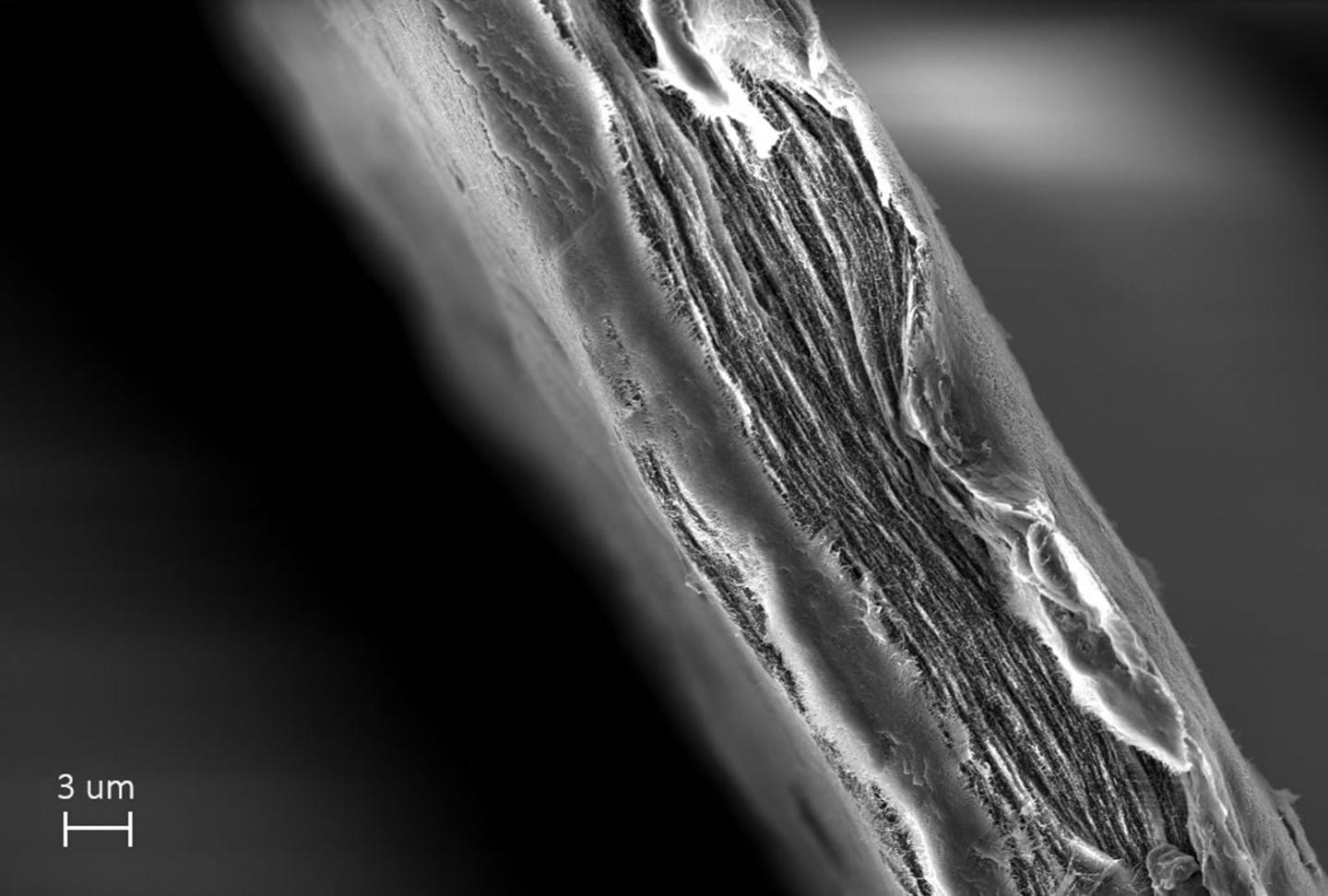Scientists have developed a simple sheet of paper that can filter tiny, disinfectant-resistant viruses right out of water - offering a cheaper way to make drinking water safe for millions of people in the developed world.
While researchers have done a pretty great job of coming up with easy ways for people to purify water in recent years, one thing they've struggled with is finding an affordable way to get small viruses out.
This new sheet of paper tackles that problem using layers upon layers of super-thin cellulose nanofibres - developed from green algae - and it's been named the 'mille-feuille' or 'thousands leaves' filter, after the French puff pastry. Delicious.
"With a filter material directly from nature, and by using simple production methods, we believe that our filter paper can become the affordable global water filtration solution and help save lives," said lead researcher Albert Mihranyan from Uppsala University in Sweden. "Our goal is to develop a filter paper that can remove even the toughest viruses from water as easily as brewing coffee."
Right now, more than 748 million people around the world don't have have access to safe drinking water and basic sanitation - and water-borne infections are one of the biggest causes of global mortality, particularly for children under five.
Of those water-borne infections, viruses are particularly dangerous. They're difficult to remove physically because they're so tiny, and they can also be extremely resistant to disinfectants such as chlorine, which we rely on heavily to make water safe to drink.
Filtration is a more effective and energy-efficient purification option, but some of the best versions can be expensive. Cellulose, which we already use to make things like tea bags, is a much cheaper option, but in its regular form, its pores are too large to get rid of viruses.
Which is where this new mille-feuille system comes in. Using multiple layers of nanofibres, the paper has such small pores that it can scoop up all kinds of viruses, such as influenza, and physically remove them. You can see a microscopic image of the paper below:
 Simon Gustafsson
Simon Gustafsson
Best of all, the paper is also long-lasting and can easily distributed to where its needed - which isn't only developing countries.
"Safe drinking water is a problem not only in the low-income countries," said Mihranyan. "Massive viral outbreaks have also occurred in Europe in the past, including Sweden."
Filters could also be used in future in medicine to help produce therapeutic proteins and vaccines, he adds.
Teri Dankovich, of Duke University in the US, who wasn't involved in the study, told Chemistry World that the filter paper "shows great potential for affordable water purification in remote areas".
But she added that it's important for the researchers to determine the filter's lifespan before it gets clogged up.
This is something the team is now working on, and they're also scaling up the manufacturing process to make sure it remains cheap and reliable.
"For a product dealing with such a specific hazard, it is important to validate, and re-validate, our processes," Mihranyan told Chemistry World. "Every single detail counts and we still have a lot to learn."
The research has been published in Materials Horizons.
